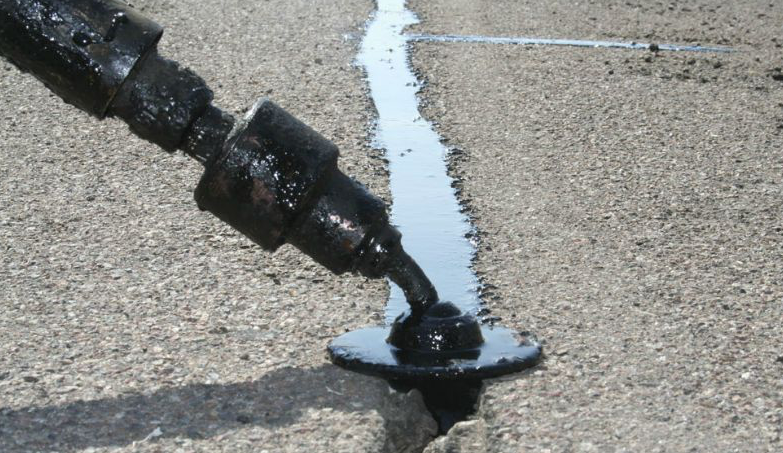Warm Mix Asphalt: A Lasting Service for Sidewalk
Warm Mix Asphalt (HMA) has actually emerged as a leading sustainable option for sidewalk solutions, offering a myriad of innovative modern technologies and environmental benefits. Its capacity to lower and reuse products energy consumption provides a compelling situation for its adoption in road building jobs. Furthermore, the long-term performance and toughness of HMA make it a recommended choice for facilities advancement. As the demand for eco-friendly building and construction practices grows, checking out the nuances of HMA's sustainability can give useful insights right into the future of pavement remedies.
Environmental Advantages of Warm Mix Asphalt

Moreover, Hot Mix Asphalt aids to minimize city heat island effects. Its dark shade takes in sunshine, minimizing the quantity of warm mirrored back right into the atmosphere contrasted to lighter-colored sidewalks. This can lower ambient temperature levels in urban locations, decreasing the need for cooling and eventually lowering power usage.
Furthermore, Hot Mix Asphalt adds to improved stormwater administration. Its porous nature enables water to charge and penetrate the sidewalk groundwater products, lowering runoff and the danger of flooding. These ecological advantages make Warm Mix Asphalt a lasting selection for paving roads and freeways.
Power Effectiveness in HMA Manufacturing
Is power effectiveness a crucial factor in the production of Warm Mix Asphalt (HMA)? Energy plays a considerable function in the production of HMA, impacting both expense and environmental sustainability. One key aspect of energy performance in HMA production is the usage of warm mix asphalt (WMA) technologies.
In addition, developments in plant modern technologies have actually led to even more energy-efficient HMA manufacturing processes. By maximizing energy usage in HMA production, the sector can reduce its carbon footprint while preserving high-grade pavement materials.
Recyclability of Warm Mix Asphalt
The recyclability of Hot Mix Asphalt (HMA) is an essential element of its sustainability and lasting environmental impact. HMA is among the most recycled materials in the United States, with over 100 million bunches of redeemed asphalt pavement (RAP) being recycled annually in new pavement building my company and construction. Recycling HMA provides a number of ecological advantages, such as reducing the demand for virgin materials, lowering energy consumption during production, and lowering the amount of waste sent to landfills.
The process of recycling HMA includes milling the existing sidewalk, crushing it into smaller pieces, and blending it with brand-new accumulation and asphalt binder to develop a recycled mix. This recycled mix can frequently carry out in addition to and even better than conventional HMA, while requiring less basic materials and generating lower greenhouse gas exhausts. By including RAP right into brand-new pavement projects, road firms can save all-natural resources, decrease costs, and lessen the ecological footprint of road construction and upkeep tasks. Generally, the recyclability of HMA plays a substantial duty in advertising sustainable practices within the sidewalk market.

Long-Term Performance of HMA
Asphalt pavements show sturdiness and strength over an extensive period, showing the lasting efficiency of Warm Mix Asphalt (HMA) Additionally, advancements in HMA modern technology, such as the use of polymer-modified binders and cozy mix asphalt, have actually further improved the longevity and durability of HMA sidewalks. By focusing on top quality building and upkeep techniques, HMA continues to verify itself as a cost-effective and sustainable remedy for long-lasting pavement facilities.

HMA: Durability and Sustainability
Showing both sturdiness and sustainability, Warm Mix Asphalt (HMA) has actually become a keystone in the building of resilient pavement frameworks - commercial parking lot paving. HMA's longevity comes from its capacity to endure hefty tons, harsh climate condition, and high website traffic volumes, making it a trusted choice for streets, freeways, and airport terminal runways. The structure of HMA, which typically consists of accumulations, binder, and filler, plays an important duty in improving its long life and resistance to deterioration
In addition, HMA's sustainability lies in its recyclability and energy-efficient production procedure. The ability to reuse recovered asphalt sidewalk (RAP) in new HMA mixes decreases the need for virgin materials and reduces the ecological influence of sidewalk construction and maintenance. In addition, the energy efficiency of creating HMA hinges on its reduced blending temperatures contrasted to visit this site various other sidewalk products, leading to decreased energy usage and greenhouse gas exhausts.
Verdict
To conclude, warm mix asphalt (HMA) supplies a lasting service for sidewalk with its environmentally friendly qualities. HMA's recyclability, this contact form energy efficiency in manufacturing, and long-lasting toughness make it an eco-friendly choice for road building. By saving natural deposits, reducing waste, and lowering greenhouse gas discharges, HMA plays a critical role in advertising sustainability in infrastructure growth. Its ability to mitigate city heat island effects better emphasizes its relevance in producing resistant and ecologically mindful sidewalk systems.
HMA is one of the most recycled materials in the United States, with over 100 million bunches of redeemed asphalt pavement (RAP) being recycled yearly in new pavement building and construction.The process of reusing HMA includes milling the existing sidewalk, crushing it right into smaller items, and mixing it with brand-new aggregate and asphalt binder to develop a recycled mix.Asphalt sidewalks show toughness and resilience over an extensive period, mirroring the long-term efficiency of Warm Mix Asphalt (HMA) Furthermore, innovations in HMA innovation, such as the usage of polymer-modified binders and warm mix asphalt, have actually further enhanced the toughness and longevity of HMA sidewalks. The capacity to reuse redeemed asphalt sidewalk (RAP) in new HMA blends reduces the demand for virgin products and minimizes the environmental influence of sidewalk construction and maintenance.